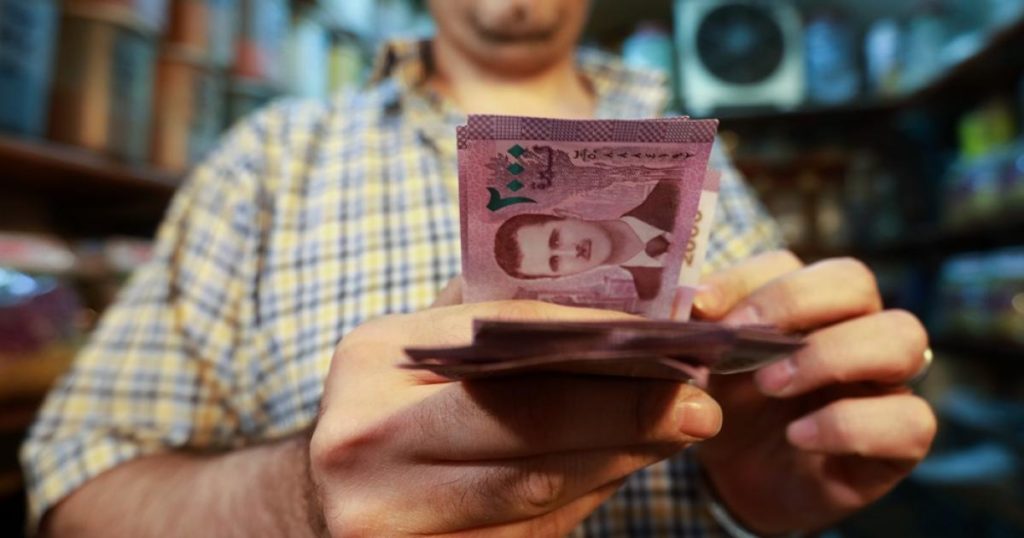At the end of November 2019, the President of the Syrian regime, Bashar al-Assad approved the general fund budget for the fiscal year 2020 at 4,000 billion Syrian pounds (SYP – around 9.2 billion USD at the exchange rate of the Syrian Central Bank).
The budget approval coincided with a severe financial turmoil and a significant depreciation in the Syrian pound against the US dollar on the black market; the Syrian pound exchange rate has declined sharply against the dollar to exceed the barrier of 800 SYP per USD.
How has Syria’s budget changed since 2004?
Before the year 2010, the Syrian budget was experiencing normal growth in line with the economic growth in the country. The budget deficit in 2010 amounted to about 61 billion SYP (around 1.297 billion USD), equivalent to 10% of the budget in the same year, according to the statistics of the Central Bank of Syria.
Enab Baladi monitored the statistics published on the website of the Syrian Central Bank, on the budgets that were being approved in Syria from 2004 to 2020.
The monitoring showed that the general budget deficit in 2012 is estimated at 400 billion SYP (7,273 billion USD), an equivalent to nearly 60% of the overall size of the budget in the same year.
The monitoring also shows that Syria’s 2020 budget is equivalent to less than a third of the 2011 budget, according to its value against the USD (at the market exchange rate) when the budget was defined.
The accelerating inflation rate and the depreciation of the Syrian currency that took place after 2011 make the comparison between the budget established in the Syrian pound after 2011, meaningless. Therefore, we transferred the value of the budgets from 2004 to 2020 from SYP to USD in order to know the true value of the budgets throughout the previous years.
Where is the budget spent?
The budget represents a financial statement prepared in advance, in order to set expectations for all monetary operations that will take place during the fiscal year. The budget is distributed according to a set of tasks and responsibilities until the objectives related to the financial budget are achieved.
The budget is spent in two fundamental frameworks: operating budget and investment budget.
The operating budget is the continued funding of the state ministries, and its sectors.
Examples of this type of budget contain salaries, pensions, expenses for each ministry, administrative expenses, wages as well as transfer expenditures, such as maintenance of state property.
As for investment budget, they include the investment plans of each ministry to expand its work, such as establishing vital infrastructure and facilities.
Reasons for budget deficit
A budget deficit is a financial loss and occurs when the country’s expenditures exceed its revenues within a specified fiscal year. In other words, the budget deficit is the difference between government revenues and expenditures. The budget deficit is compensated by internal or external borrowing.
After 2011, oil revenues in Syria collapsed from 180 billion SYP (3,600 billion USD) to ten billion SYP (200 million USD) in 2012.
Non- tax revenues (excluding oil) also decreased from 203 billion SYP (4,060 billion USD ) in 2011 to 145 billion SYP (2.900 billion USD ) in 2012, according to statistics from the Central Bank of Syria.
The deficit of the state’s general budget is funded from two sources; domestic financing and external financing. The domestic financing includes bank financing from the central bank and the banking system as a whole as well as non-bank financing through genuine savings for society such as investment certificates, treasury bills and bonds.
Spending on the Price Stabilization Fund has dramatically increased since the start of the Syrian conflict. The spending rose from 24 billion SYP (510,638 million USD ) in 2010 to 55 billion SYP (1,100 million USD) in 2012.
The Price Stabilization Fund is responsible for controlling the exchange rate of the Syrian pound, which began to rise after 2011.
The Syrian pound recorded an exchange rate of 45 against the dollar in 2011 while it continued to rise unit it exceeded 750 SYP per USD in the current year.











